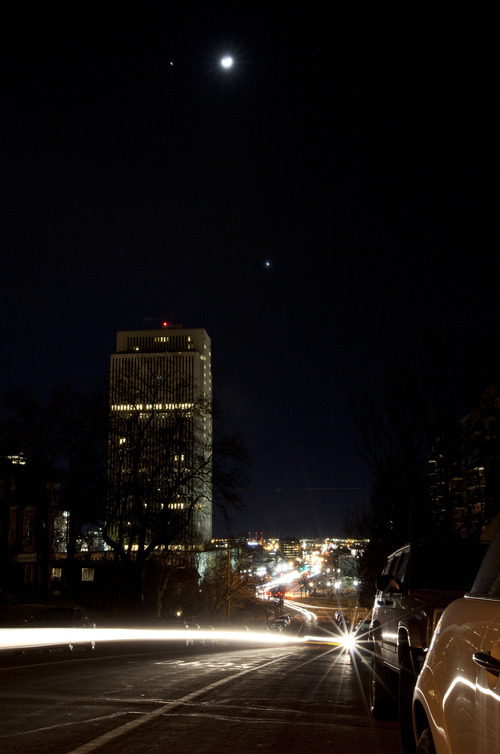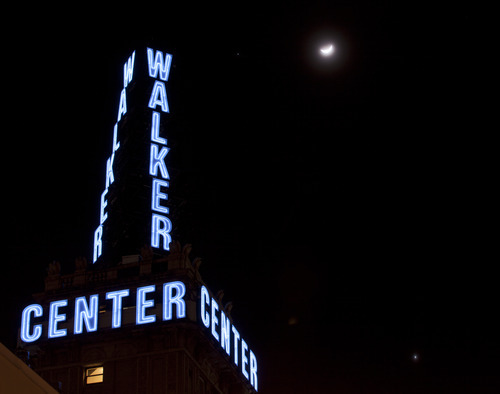This is an archived article that was published on sltrib.com in 2012, and information in the article may be outdated. It is provided only for personal research purposes and may not be reprinted.
As the Hollywood stars took to the red carpet for Oscar night, a set of star lookalikes took to the stage in the evening sky.
Jupiter, Venus, Mercury and the crescent moon aligned in the western sky, seemingly drawing a line to the horizon just before 6 p.m.
The sliver moon appeared next to the brightly shining Jupiter, Venus was just below it and then Mercury appeared just above the horizon.
For those who missed Sunday's alignment, the planets will continue to produce interesting patterns in the night sky.
Jupiter and Venus have been moving closer together since mid-February. Right now, they are about 10 degrees apart, meaning a viewer can stick out a hand and hide both behind a palm. They will continue their journey toward each other and on March 12 and 13 they will be only 3 degrees apart, meaning a viewer can hide them behind a pair of outstretched fingertips, Phillips said.
"There's something mesmerizing about stars and planets bunched together in this way — and, no, you're not imagining things when it happens to you," Phillips wrote in a NASA Science News release. "The phenomenon is based on the anatomy of the human eye."
A part of the eye called the fovea is where the eye's light and color sensors, called rods and cones, are the most densely packed. It's a stretch of about 5 degrees, meaning that through most of March, Jupiter and Venus will fit in that area. The brain focuses most intently on the input hitting the fovea, so viewers will see those planets in high definition.
Twitter: @sheena5427









